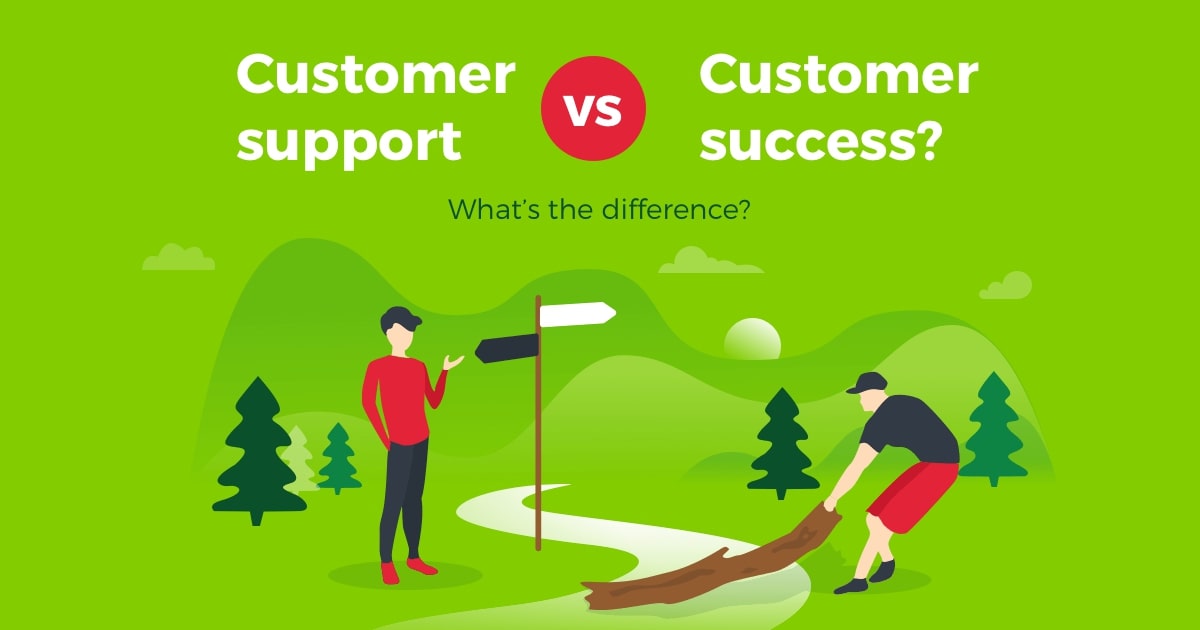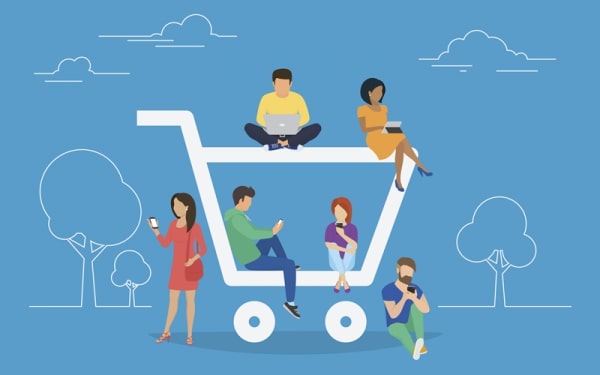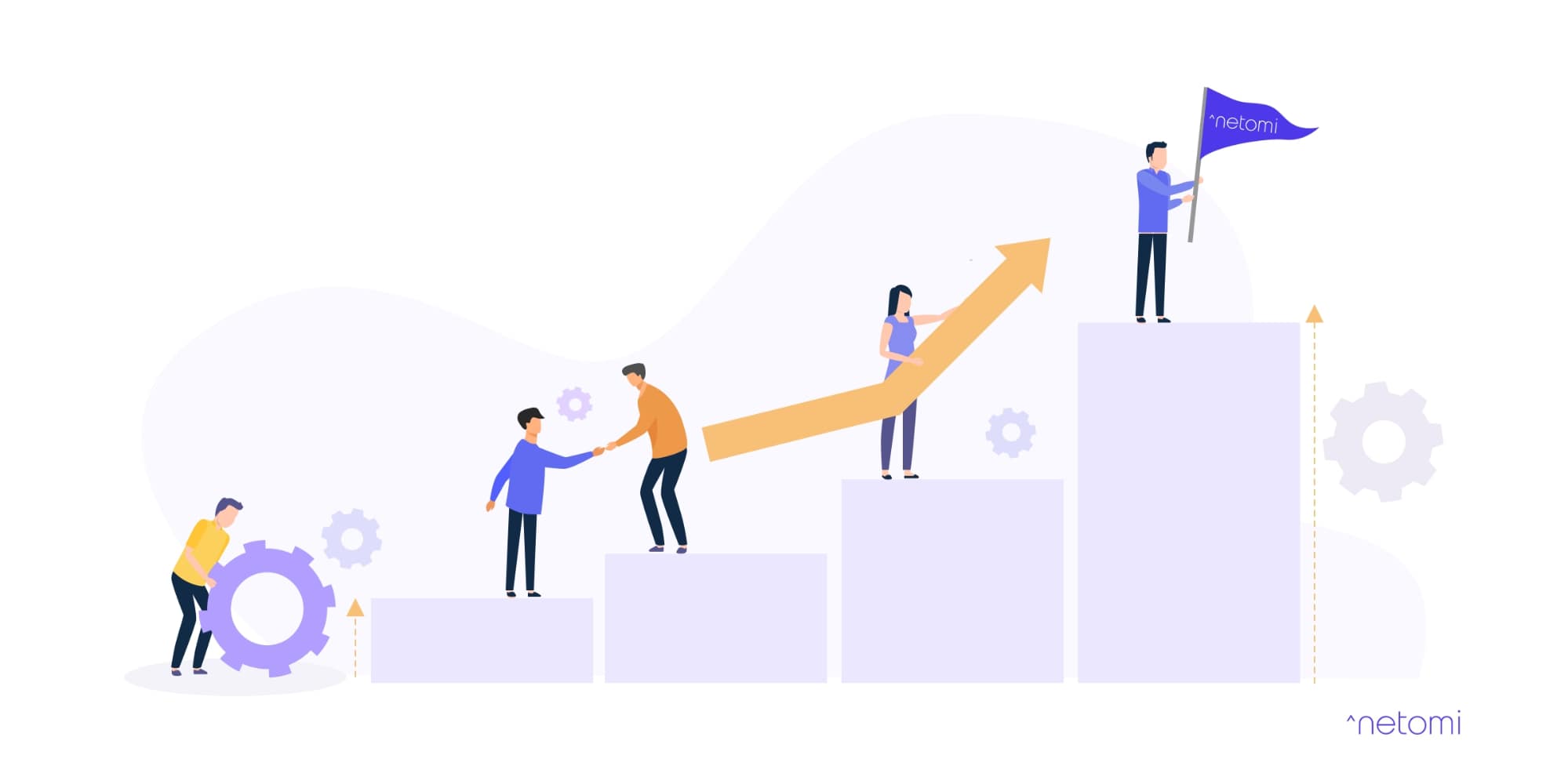What is Customer Success? Everything You Need to Know
What sets successful businesses apart from their rivals is the quality of their products and services and the experience they give to their customers. Today’s most profitable businesses are committed to delivering their customers’ desired outcomes, and they try their best to help their customers achieve these outcomes. In other words, customer success is their biggest goal.
Suppose you are focused on delivering high-quality products (or services) but not on creating an effective customer strategy. In that case, you can soon find your business struggling to attract and retain customers. In reality, a recent study by Walker found out that customer experience surpassed price and product as the main brand differentiator in 2020.
Whatever the issue that your product solves or allows others to achieve, it’s important to note that your customers want the final outcome. To your customers, your product is just a means to an end, and possibly just one of the many alternative solutions that aim to help you achieve the same result.
Thus, while attracting new customers is important, helping your customers succeed is even more important and essential to your company’s growth and profitability. If you can’t help your customers achieve the result they want with your product, they probably won’t stick with your brand for long. In this guide, I will explain to you everything you need to know about customer success, and what you can do to help your customers succeed.
What is customer success?

Customer success is any endeavor that a company undertakes with the goal of helping its customers to achieve their desired goals with the company’s product. Customer success teams often take a constructive, data-driven approach to help consumers use the product more efficiently and effectively. This strategy allows companies to accomplish a variety of top-level objectives, including:
- Reducing churn.
- Increasing renewal sales and revenue.
- Increasing customer loyalty and retention.
By making sure that the customer will be able to achieve their desired goal with the product, customer success increases the probability that customers will stick around and buy more from the business. This is a critical component of boosting monthly recurring revenue, especially for SaaS and other subscription-based businesses (MRR).
Why is customer success important?

Staying continuously engaged with the customer during their product use journey helps the customer success team to intervene proactively and enhance the customer experience. Monitoring data, such as product use and license use, can equip the team with information to inform future engagements.
For example, let’s say your product usage declines over the course of a month. Data reveals that business is typically slow in their specific location during this month, but you also see that there are more available help tickets this year than last year. By looking at all these various data points, you will get a better view of the situation and what’s really going on. Use may be common, but preparation during onboarding has been lacking this year, leading more people to open support tickets. Then you can take action and have a solution—such as enhancing customer education during onboarding—before the problem leads to customers leaving your product.
Such a strategic approach helps you to attract customers on a long-term basis. This is advantageous when it comes to sales, as the acquisition of a new client costs five times higher than the retention of an existing one. Your business can not only make higher profits longer but will also grow a reputation as a company that takes good care of its customers, which can draw new customers.
Is customer success and Customer Support the same thing?

The difference between customer support and customer success has given rise to a variety of lively discussions. These two roles share similar skill sets and goals, but different techniques are put in place.
- Customer support teams solve product-related problems and advise the customer about how the product functions. They collaborate with other operating teams, such as Engineering and Product, to develop current functionality while gaining input from customers on upcoming release cycles.
- Customer Success teams, on the other hand, work proactively with clients to understand their business objectives and guide them to achieve success with the product, thus increasing the value of the customer’s lifetime.
How Customer Support and Customer Service Work Together?
Both teams have the same aim in mind: to support consumers and to offer unforgettable experiences. Let’s take a closer look at the concept of both positions and explore how both teams can work together to generate value for the customer.
The concept of customer support continues to evolve as the standards of today’s customer’s increase. Quality customer service is prompt, empathetic assistance that keeps the interests of the customer at the center of any interaction.
Professional customer service experts understand the product and take excellent care of the customers with whom they communicate. They assist customers to find solutions and report on the customer’s issues to the product team. Chase Clemons, a member of Basecamp’s Customer Support team, sees customer support as a product attribute.
The primary objective of customer success is to understand what success means to your customer and to work hand-in-hand to assist them to achieve this in every aspect of their customer journey with your business.
Indicators such as whether the client has spoken with the Customer Support Team can help assess the current stage of the customer’s experience within the first 90 days of the start of the trial. Based on these metrics, the Customer Success team can step in and learn more about the customer’s experiences and drive them into features that will benefit their teams and inspire them to make full use of the product.
With these basic definitions, you probably can spot some differentiating qualities between customer success and customer support. Now let’s break it down further into a definitive list:
- Approach: Customer support receives and replies, while customer success discusses and creates strategies.
- Objective: Customer support focuses on addressing and preventing existing problems, while customer success aims to achieve the customer’s desired business results as the customer journey continues.
- Metrics: Customer support metrics assess service quality, resolution times, and overall customer satisfaction, while customer success focuses on market impact metrics such as expansion, customer retention, and overall lifetime value.
- Skills and disciplines: Customer support possess skills that are complementary with engineering, marketing, and organizational teams, while customer success often extends to a wide variety of disciplines and business experience and is more consultative. Both positions require the practitioners to be empathetic, resourceful problem solver with a thorough understanding of who the client is.
- Business impact: Customer support is an important part of running a business since customer questions still need to be addressed, whereas customer success is also a value-added business function, driving sales and growth.
Although each team performs unique roles over the course of the customer journey, they collectively cover all facets of your company’s great experience. Companies who understand this harmony by pooling customer support and customer success teams together will have a greater effect on their customers and companies than by siloing them as stand-alone roles or divisions.
By uniting Customer Support and Customer Success, the customers would feel like everyone is on the same team. When you work together to help your customers on their path to success, you will cultivate confidence and brand loyalty throughout the entire customer journey.
The Customer Journey in Customer Success

Consumer success teams keep track of customer progress and product use over the lifetime of the customer. There is no endgame to this process but rather a period of repeated interaction and development. This loop continues through the four foundations of the consumer journey:
Onboarding: Being the first impression and product introduction, onboarding is the customer success team’s chance of increasingly growing customer awareness and promoting product incorporation into day-to-day workflows.
Adoption: This stage is where the proverbial rubber meets the road as the customer starts using the product on their own. During this process, customer success teams closely track customer metrics to ensure that the product is used consistently and efficiently.
Escalation: Something could still go wrong with the best customer management. The secret to handling escalations is to resolve matters quickly, listen to and respond to customer’s problems and see the situation as an opportunity for a growing customer relationship.
Renewal: You can view renewal as the reward of the customer experience and the dedication to the success of the customer. Upsells do not rely on timelines, nor are they helpful to certain customers. But if the customer is willing to expand, the customer success teams need to be there to help.
These four foundations of customer satisfaction are the ways to navigate the customer journey. At each point, the customer success team works to create a responsive customer experience that eventually delivers recurring revenue.
Best tips to help your customers succeed

You can follow these tips to build an effective customer success team to help your customers achieve their desired goals.
Create a Dedicated Customer Success Team
One of the best ways to ensure that customer satisfaction becomes a crucial part of your company is to create a dedicated customer success team. Taking a step towards being a customer success manager or developing a team that is responsible for the customer success plan will bring a lot of focus and energy to your efforts. It is important to note that customer satisfaction is not the property of any person or team, but is the responsibility of the entire company. Having dedicated personnel that make customer success a priority will help communicate this message to all other departments of the company.
Leverage Customer Success Tools
Using software will provide access to resources such as shared inboxes and customer portals that can be used to streamline customer interactions. A customer success solution will help modernize your existing support operations while introducing new capabilities.
Develop a Company-Wide Customer Success Program
One of the easiest ways to monitor your customer satisfaction goals is through a company-wide CS program. Through this program, you can follow best practices in customer experience management and build a roadmap focused on the needs of your customers. You may also evaluate the outcomes and have systems in place to make changes on the basis of key learnings.
Consider a Customer Onboarding Process
The first impression that the client has with your company is crucial, particularly after the initial purchase. One way to enhance the ability to deliver value to the customer quickly is through a formal and well-constructed on-boarding procedure. You should try to create a seamless process for a customer to stay subscribed, learn about new items, and exchange knowledge easily with family and friends. A successful on-board plan will help you improve conversion rates and provide an important forum for long-term communication.
Use Metrics to Identify At-Risk Churn and Prevent It
Track metrics such as frequency of usage to define and avoid potential churns from clients. Gainsight has found that the key reason clients churn is that their needs are not being addressed. In its survey of 100 subscription-based companies, 77 percent of respondents decided that the best way to minimize churn is to recognize customers at risk of churning sooner, so you have time to introduce customer success interventions designed to get them to stay. Something as easy as a customer satisfaction survey will reveal insights into the overall wellbeing of your consumers and make it easier for the customer success team to take steps to increase customer happiness.
You might be interested in: 8 Key Customer Satisfaction Metrics You Should Pay Attention To
Other valuable metrics to monitor for insights into customer satisfaction include:
- Cross-sells
- Up-sells
- Downgrades
- Upgrades
- Down-sells
- Frequency of usage (how often the customer use the product or service)
Customer success metrics also provide useful data about customer satisfaction. Consider tracking metrics such as:
- Frequency of knowledge base access
- Number of customer support requests
- The average number of contacts to solve a customer support request
- First-contact resolution rate
- Average time to solve a customer support request
Conducting exit interviews with downgraded or churned clients often offers insights into the client’s problems. In addition to the needs or desires of consumers not being fulfilled, the following common explanations for the customer churn include:
- Customers selecting lower-cost alternatives
- Customers no longer need the product
- Poor customer service and poor customer support experience
Through observing the patterns of use of customers that have churned or downgraded and examining historical data, businesses can recognize the red flags that suggest that the client is about to churn.
Adopt a Customer-Centric Approach
The Customer Success Team is a core component of any customer-centric company. You need to understand that the value of customer loyalty is now distributed over repeated subscription renewals and is not included in a single purchase transaction.
In order to reap the full benefit of the acquisition of consumers, businesses must encourage loyalty that creates long-term commitment. The best way to ensure that a consumer relationship continues for years is to constantly involve the customer and make them understand the value. You are now friends with your customers in a mutually beneficial relationship for lifetime value.
Final words
In today’s competitive market, customer success plays an important role in the survival and growth of a business. I hope that this article has provided you with valuable information about customer success and how you can create a customer success strategy for your business. Please feel free to leave comments below for a further discussion on this topic.
New Posts






